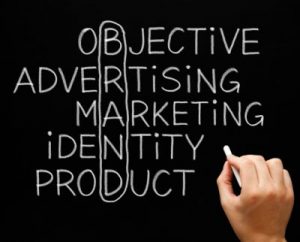
Your brand is the secret sauce of your business. Read on to see how defining your brand can ultimately define your business.
Recently, a new business closed in Oklahoma City. While that happens every day all across the world, this business was unique in both what it offered and how it defined and marketed its brand.
The business was called The Banquet Cinema Pub and, the name pretty much said everything; the place offered food, movies and alcohol. More specifically, Banquet Cinema aspired to be a locally-owned version of Alamo Drafthouse Cinema; a chain of theaters where you can dine, drink, and enjoy a movie, separately or all at the same time. The problem for Banquet Cinema, however, was that they failed to define their brand to their market. And, while it’s easy for me to cast aspersions and play backseat marketer, Banquet Cinema’s owner basically said that very thing:
“The biggest challenge has been that the movies have done really well, but people were confused they didn’t need a ticket to come into the space,” Wheat said. “And then were those going to the movies and not knowing there was this whole dining experience up front.”
The Brand Started With A Bang
Banquet Cinema did generate some publicity when it opened, and that likely created some word-of-mouth advertising. However, it appears ownership did little more to define their brand after that. While there was a website, Instagram, Facebook, and Twitter accounts, the lack of brand definition is apparent with each. Where Banquet Cinema could have clearly defined the unique qualities of their business on their website’s “About” page, they gave potential customers this instead:
Get ready for a unique movie & dining experience with a giant dining area including shuffleboard tables, games and a fantastic array of food and drink, along with two charming cinema rooms.
Then They Lost The Plot
I realize it’s hard enough to run a bar, restaurant, or movie theater, so trying to market all three rolled into one is certainly a significant challenge. In their social media however, Banquet Cinema seemed to never market all three elements of the business together. You want a coherent brand identity and unified marketing message. But, Banquet Cinema wanted to be a brunch spot, a live music venue, a neighborhood pub, or a sports bar. Given that, you can understand why “people were confused they didn’t need a ticket to come into the space.”
Though they could clearly see their brand identity problem, Banquet Cinema pulled the plug after roughly six months in business. However, relying on word-of-mouth advertising and social media to market your business and establishing a brand identity and customer base takes time. The old Rule of 7 in advertising was that it took at least seven impressions to compel someone to act on your marketing message. In the digital age, you need at least seven impressions if not more. And your message has to be clear and precise to rise above all the other clutter. There were likely other factors, but Banquet Cinema’s narrow marketing plan and incoherent branding certainly didn’t go above the noise.
How Do You Tell Your Story?
So now, think about your business. Remember that your brand is the promise your company or products makes to your customers. Does your marketing accurately reflect that? Does all of your advertising contribute to defining and shaping your brand? Do you reach existing patrons and potential new customers who may be unfamiliar with your products or services? Does your marketing allow someone to quickly ascertain who you are, what you do, and what you’re selling?
Knowing your business is one thing, but if you can’t relate that to your customers, you might have a problem. Every movie tells a story. So, make sure your marketing script tells a story of your business. Then continually connect with your patrons so that they can relate to your brandr.
If you need some help telling your story, defining your brand, or developing a better brand strategy, give us a call. We can talk about it over a beer, a bite, and maybe even a movie.
